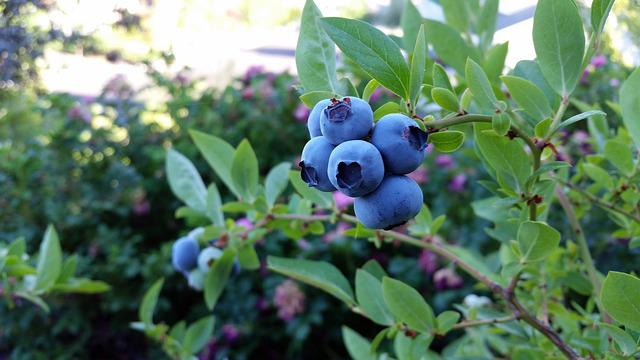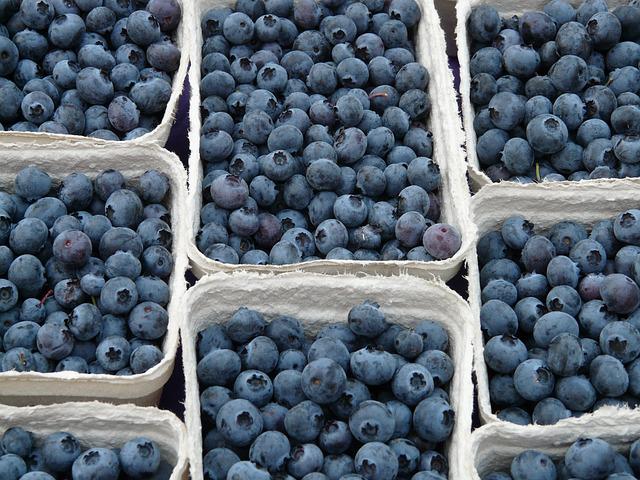Where Do Wild Blueberries Grow?

Wild blueberries grow in both temperate and glacial climates. They grow best on acidic, nutrient-poor soils in the Northern Hemisphere, where they are found. In North America, Vaccinium angustifolium can be found in Maine, Atlantic Canada, and Quebec by the sea and the woods. There are a lot of places in Northern Europe where you can find the European Wild Blueberry, which is also known as the Bilberry or Vaccinium myrtillus. It likes to grow on Alpine slopes, forests, and moorland.
Table of Contents
Where to Find Wild Blueberries in the U.S.
They can grow in zones 3 through 6 of the U.S. Department of Agriculture Plant Hardiness Scale. Where wild blueberries grow depends on the type of blueberry. There are both lowbush blueberries and top sour blueberries. The lowbush blueberries can be found in both fields and forests. Maine and New Jersey are the places where wild blueberries are most common. They grow all over the United States but are most common there. Wild blueberries are safe to eat, but they will taste best when fully ripe and juicy. Tickle the fruit bunches to see if they’re ready to eat. Eat the fruit that comes off easily. However, they don’t become fully ripe for a few days after they turn blue. Wild berries can be hard to tell apart, and not all of them are good for you. Do not eat berries that you can’t tell for sure.
Are There Wild Blueberries You Can Grow?
People frequently inquire about where they can purchase blueberry plants. The short answer is that they are readily available. A wide variety of blueberry bushes can be found in most garden centers. It is possible to select from a wide variety of blueberry cultivars. On the other hand, wild blueberries are not to be found in any of the blueberry varieties.
You can’t grow wild blueberries in your garden. No man-made structures can be found here. The soil is usually acidic and low in fertility, making it useless for growing anything else. If nature has not placed them there, wild blueberries cannot be grown on your property.
Growers need only manage wild blueberries because they naturally occur. It’s a big part of the management to get rid of other plants. The two-year cycle of blueberry production necessitates that most farmers divide their land into two sections: a vegetative year and a harvest year. Each year, they’ll be able to harvest half of their land. It is necessary to mow the fields every year after harvest.
It can take years for wild blueberries to completely cover a field because the plants spread very slowly. There are underground runners known as rhizomes that allow wild blueberries to proliferate. It takes wild blueberries five centimeters per year to spread on their own if they are left to their own devices. The annual growth rate in a blueberry farm field is still only about 30 centimeters.
There will be new growth from the rhizomes in the future. Berries are considered one plant, even though a distance of several yards may separate them because underground runners connect all the bushes.
Attempts to reintroduce the wild blueberry have been made. A successful transplant is unlikely because of the plant’s fragile root system and susceptibility to shock.
Wild Blueberry Species in North America
Native to North America, the lowbush and sour top wild blueberries are the two most common varieties (Vaccinium myrtilloides). Compared to the lowbush blueberry, the sour top is a much larger shrub, growing from 6 to 24 inches tall. Both shrubs produce a dark blueberry. The sour top’s berry has a waxy coating, while the lowbush’s is powdery. As the name implies, top sour berries are less sweet than lowbush blueberries.
The wild blueberry plant comes from North America. This plant is part of the genus Vaccinium of plants. Five types of blueberries grow wild in Canada, and they all come from the same place. The most important things:
Velvet-Leaved Blueberry
Vaccinium myrtilloides Michx
This is mostly a plant in the forest. Some leaves and stems of the species are hairy because there are more branches. A lot of the plants are between 6 and 24 inches tall. It is said that after cutting it all the time, its density goes down. “High sweet” is more productive in the second year after pruning. This species is more productive in the third year. “Bloom” is a waxy coating on the fruit that makes it look blue. People call the fruit “Sour Top.” It’s not as sweet as the common wild blueberry.
Wild Low Sweet
Vaccinium angustifolium Ait
This species is the most common in fields that have been tended to and in the forest. 7 to 38 cm high plants can grow (3 to 15 inches).
Stumps have no hairs. People like the fruit because it is sweet and blue. It is covered in a bloom, which gives it a light blue look. In this species, there is a sub-species called the “Black-fruited Low Sweet” (Vaccinium angustifolium var. nigrum). There are some differences from the Low Sweet. The fruit is black with no waxy coating, and there is no wax on the fruit itself.
Highbush Blueberry
Vaccinium corymbosum L.
This species can be found in many places, but it likes wet places like the edges of bogs and swamps.
Wild Blueberries Around the World
The genus Vaccinium has a lot of different kinds of wild blueberries. here is the list by VeganOnBoard.com
- Bilberry (U.K.)
- Whortleberry (South England)
- Blaeberry (Scotland)
- Huckleberry (U.S.)
- Myrtille (France)
- Heidelbeere (Germany/Austria)
- Aðalbláber (Iceland)
- Blåbär (Sweden)
- Mustikka (Finland)
- Jagody (Poland)

